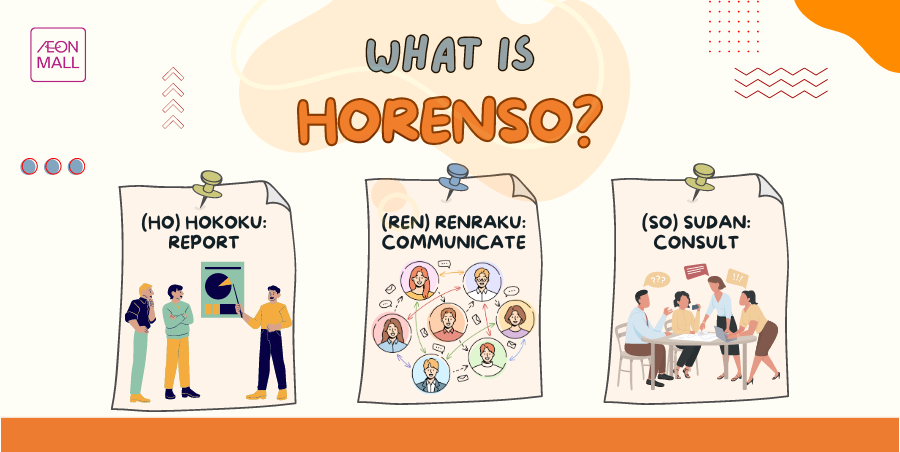What do you know about “Japanese work culture”? The emphasis on punctuality, strict rules in business manners, or complex work procedures?
If you are considering career development with a Japanese company, refer to this article to understand “HORENSO” – one of the popular communication principles used in Japanese companies that help you shorten cultural differences and adapt quickly to the work environment.

What is “HORENSO”?
In Japanese, Horenso means Spinach. You might be wondering about the correlation between Spinach and Horenso and why Spinach is important in the communication principles of the Japanese. However, the truth is that there is no actual relation here. “HoRenSo” stands for three words: (HO) Hokoku – Report; (REN) Renraku – Communicate; and (SO) Sodan – Consult.
- (HO) Hokoku: Report
“Reporting” involves constantly reporting to your management about the status of assigned tasks. In Japanese companies, the process and the result are equally important. The purpose of reporting is not only to keep management updated on the progress and to evaluate your performance accurately but also to promptly identify and support in resolving any unexpected issues.
- (REN) Renraku: Communicate
“Renraku” refers to brief and quick information to your coworker or related parties. The difference between “HO” and “REN” is that anyone can initiate “Renraku”. Managers can inform employees and vice versa, whereas “HO”, staff is the one that approaches.
When informing relevant parties, it is essential to ensure that the information provided is accurate and devoid of personal assumptions or rumors. Maintaining close communication helps minimize the risk of misinformation or misunderstandings. Furthermore, effective communication not only keeps all parties informed about work progress but also enables them to be ready to support each other immediately if any issues arise.
- (SO) Sodan: Consult
Japanese companies frequently encourage employees to engage in discussions and consultations with team members, supervisors, or relevant parties to identify solutions rather than attempting to resolve issues independently. Proactively seeking advice encourages diverse perspectives and facilitates creative problem-solving.
In Japanese work culture, teamwork spirit is consistently prioritized over individual. Seeking consultation does not imply a lack of ability, rather it demonstrates respect for relevant parties or your colleagues.
The question is whether “HORENSO” facilitates “Effective Communication” or is it a manifestation of “Micromanaging”?
“Micromanaging” is a management style that focuses on controlling every part of a situation, even including the small details, in a way that may not be necessary and may not give enough responsibility to other employees, to ensure employees follow the right ways as required. Management often controls tasks rather than empowering employees to complete their own work.
It can be affirmed that “HORENSO” is completely different from “Micromanaging”. In Japanese companies, employees are frequently given authority to propose ideas and control work progress.
When implementing HORENSO, employees are given space to grow. The role of the managers is a “bystander” to cover the progress. Because of that, management believes that if problems arise, their employees will inform them quickly. Meanwhile, employees are confident that their management can always be ready to help when needed. If “Micromanaging” causes a loss of trust and limits employee development, “HORENSO” will facilitate building relationships between management and employees as well as among team members.
Of course, “HORENSO” will have both advantages and disadvantages. However, from one perspective, effectively applying this method can promote teamwork spirit, build trust, facilitate effective communication, and encourage creative problem-solving.
Hopefully, the above information can help you better understand the communication culture in Japanese companies and quickly adapt to the new working environment.
